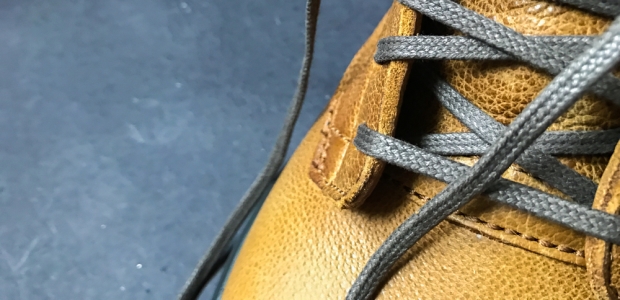
Foot Protection Essentials
The OSHA 1910.136 standard and the ASTM F2412-11 standard indicate how many kinds of foot injury are possible, some of them even disabling.
- By Jerry Laws
- Jan 01, 2018
A document listing severe work-related injuries reported to OSHA from Jan. 1, 2015, through March 31, 2017, is available online, and it makes sobering reading. Amputations, slips and falls, crushing injuries, and many more types of serious incidents from federal OSHA states are listed there. Slips and foot injuries are common, such as this one from January 2015 in St. Louis:
"An employee was setting a string of four railcars in the yard with his groundsman. The groundsman secured the ground hand brake on the first railcar and unhooked the string from the railcar. The employee noticed a railcar starting to move as the manual ground brake on the first railcar failed. He attempted to set the brake on the second car when the railcar wheel smashed his steel toe boot to the ground, fracturing his right foot and removing a toenail."
That's a short description of severe trauma, I'm sure you'll agree, even though this worker was wearing protective footwear to shield him against crushing impacts. The database1 doesn't say anything about the medical costs of all of those injuries, enforcement action taken, the amount of time lost, or whether the injured employee ever returned to work.
A good starting point for what employers need to do is to read 29 CFR 1910.136, Foot protection, OSHA’s general industry standard. At 1910.136(a), it says this:
General requirements. The employer shall ensure that each affected employee uses protective footwear when working in areas where there is a danger of foot injuries due to falling or rolling objects, or objects piercing the sole, or when the use of protective footwear will protect the affected employee from an electrical hazard, such as a static-discharge or electric-shock hazard, that remains after the employer takes other necessary protective measures.
Workers in many industries require footwear that offers protection against the hazards mentioned in that section of the standard, especially against impact, and also slip resistance.
Employer Responsibilities
It's the responsibility of employers, and by extension their safety and procurement managers, to ensure employees wear footwear that protects against the hazards they will encounter on the job, and that the footwear meets the important industry consensus standards, such as ASTM F2412-11, Standard Test Methods for Foot Protection—its test methods contain requirements to evaluate footwear’s performance for impact and compression resistance in the toe area, metatarsal protection, puncture protection, conductive properties to reduce hazards from static electricity buildup, electrical hazards from stepping on a live wire, and static dissipative properties.
Another employer responsibility is to ensure the footwear is maintained properly and replaced when necessary.
The OSHA standard and the ASTM F2412-11 standard indicate how many kinds of foot injury are possible, some of them even disabling. "The most common sprains are to the ankle," Ron Bowles, director of operations for MoveSMART, a system for preventing strains and sprains, slips and falls, and hand injuries, said during his Nov. 30, 2017, OH&S Academy webinar, "Making the Right Moves to Prevent Strains and Sprains." He explained why workers experience sprains and strains, particularly back sprains, and offered strategies for prevention.
Soft-tissue injuries of all types account for 33 percent of all lost-time injuries and illnesses, and in some workplaces they account for half of them, Bowles said.
Bowles, who gave an excellent presentation that day, works with Robert Pater, the veteran "Breakthrough Strategies" monthly columnist in OH&S, who has addressed soft-tissue injury prevention in a number of columns and conference presentations.
The 'Employer Pays' Rule
Back in November 2007, when OSHA issued a final rule saying that employers must provide PPE at no cost to their employees when that PPE is used to comply with OSHA standards, then-Assistant Secretary Ed Foulke said the agency had estimated the rule would prevent more than 21,000 workplace injuries annually—such as foot, head, and eye injuries. He explained the rule's impact this way:
When employees pay for their own PPE, they are likely to buy the wrong protective equipment, they may use it beyond its expected service life, or they may avoid purchasing it at all. When employers pay for PPE, however, they are more likely to select the right PPE for the hazards encountered in their workplaces, he said, adding, "When employers pay for PPE, we have found that they also make sure that the equipment is maintained and replaced as necessary, and generally take more responsibility for PPE selection and use. It is this improvement in PPE usage that is expected to result in fewer injuries and fatalities."
The rule specifically discussed protective footwear. It said employers aren't required to pay for non-specialty safety-toe protective footwear, if the employer permits it to be worn off the job site. But if the employer requires employees to keep non-specialty safety-toe protective footwear at the workplace, it must pay for that footwear, it said, and if the safety-toe protective footwear is a non-standard "specialty" item, such as non-skid shoes for floor strippers, the employer must pay for them. Similarly, OSHA decided that, if employers require their workers to use metatarsal guards or footwear with built-in metatarsal protection, then the employer is required to pay for the footwear.
Reference
1. https://www.osha.gov/severeinjury/xml/severeinjury.csv
This article originally appeared in the January 2018 issue of Occupational Health & Safety.